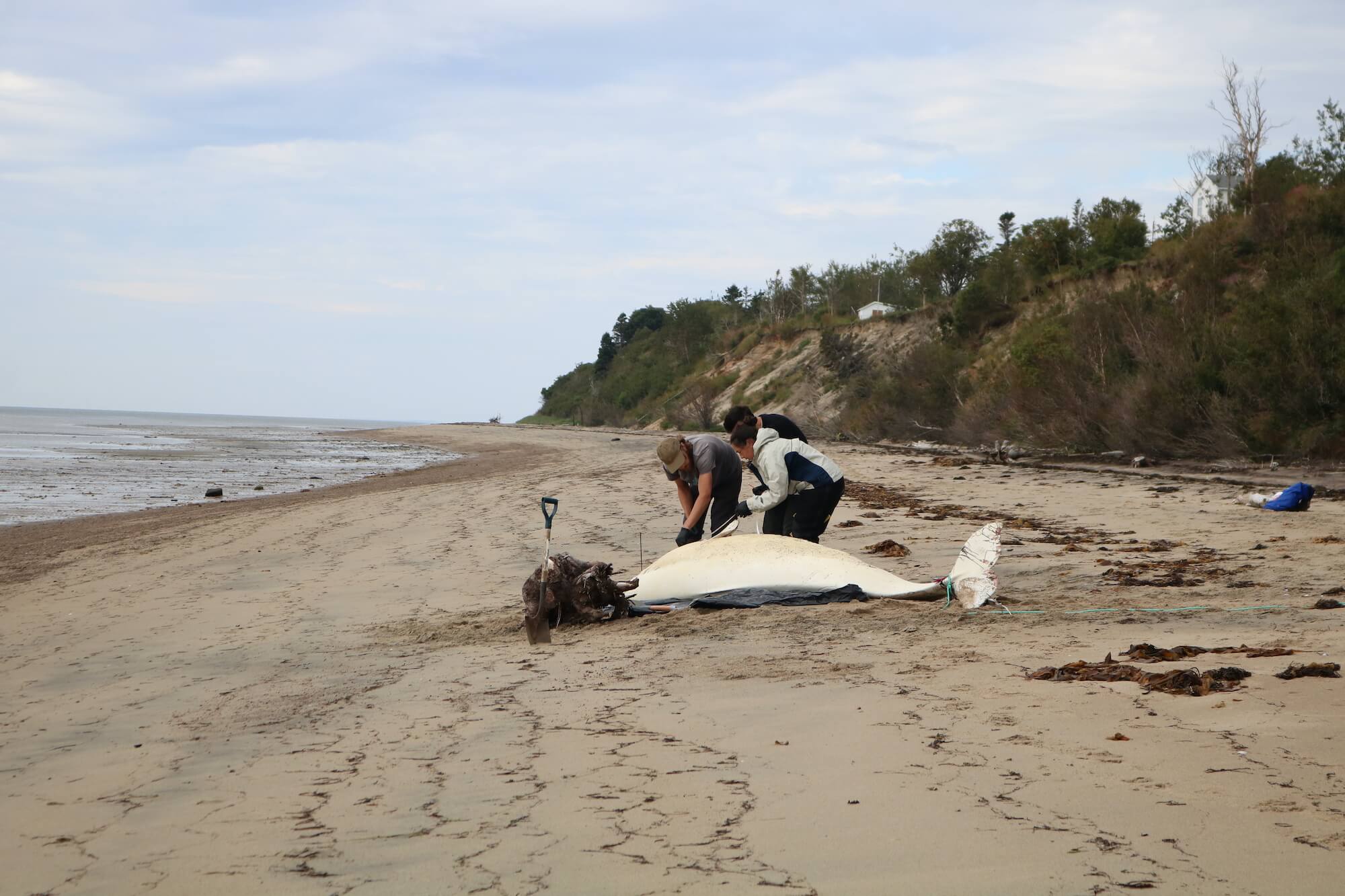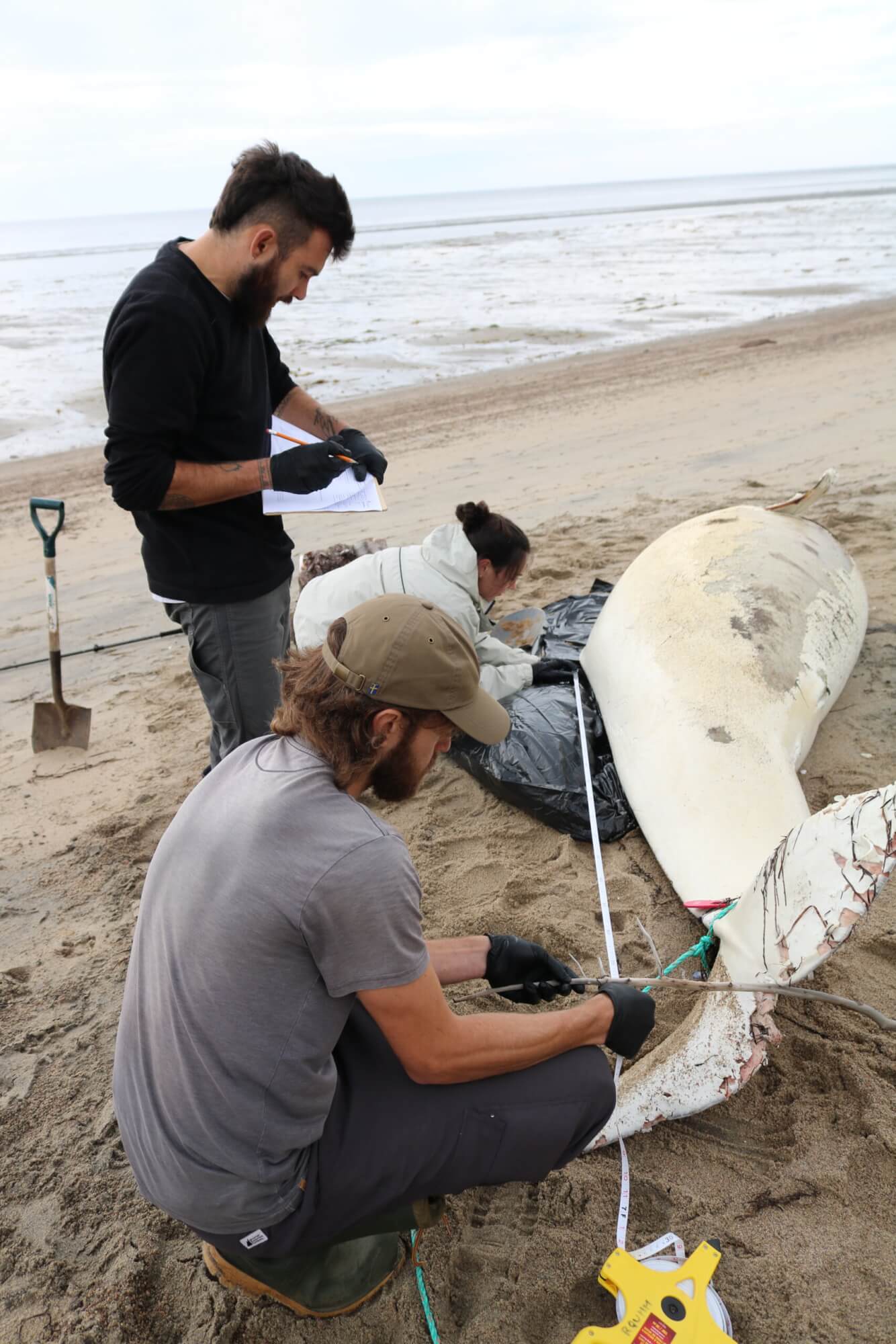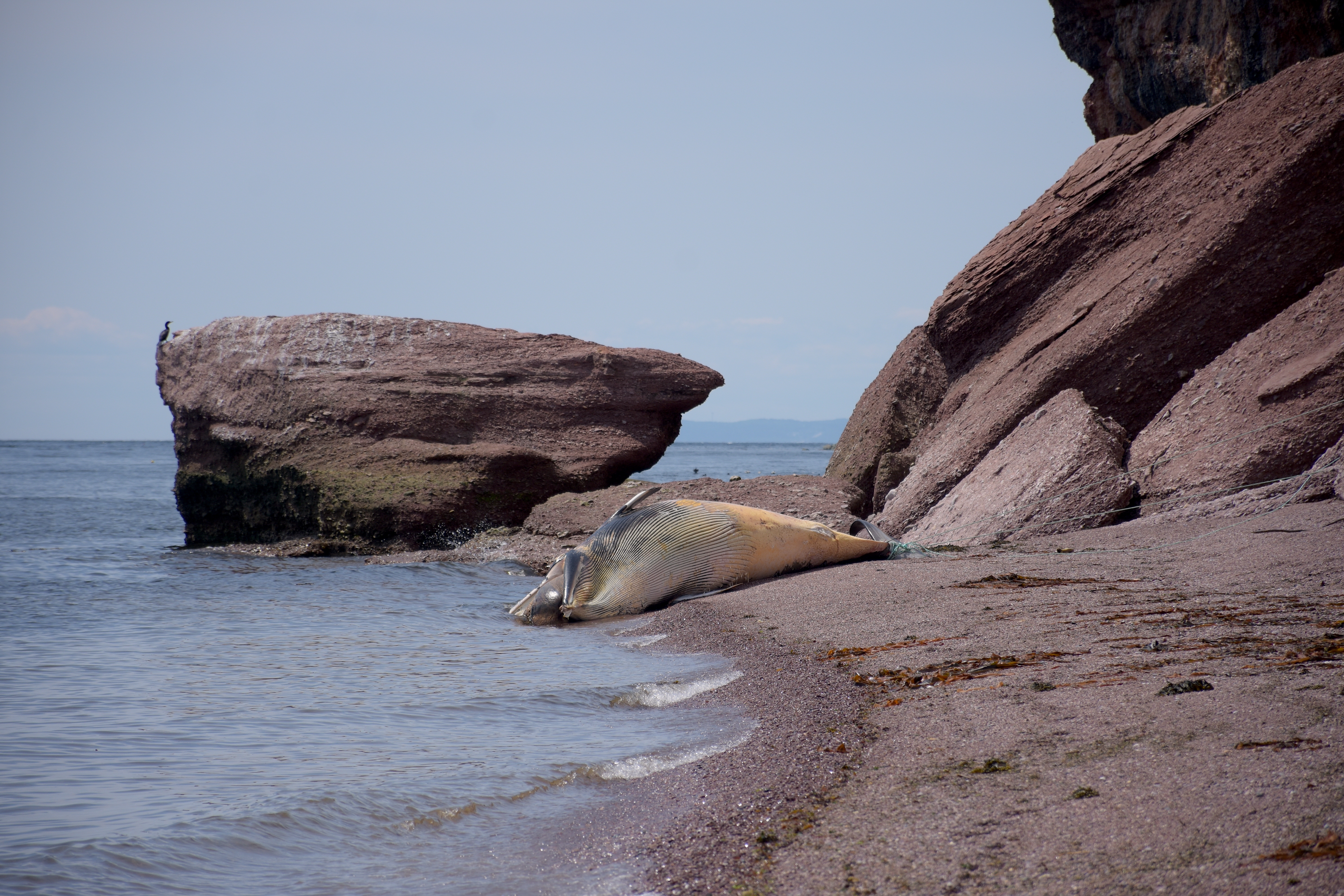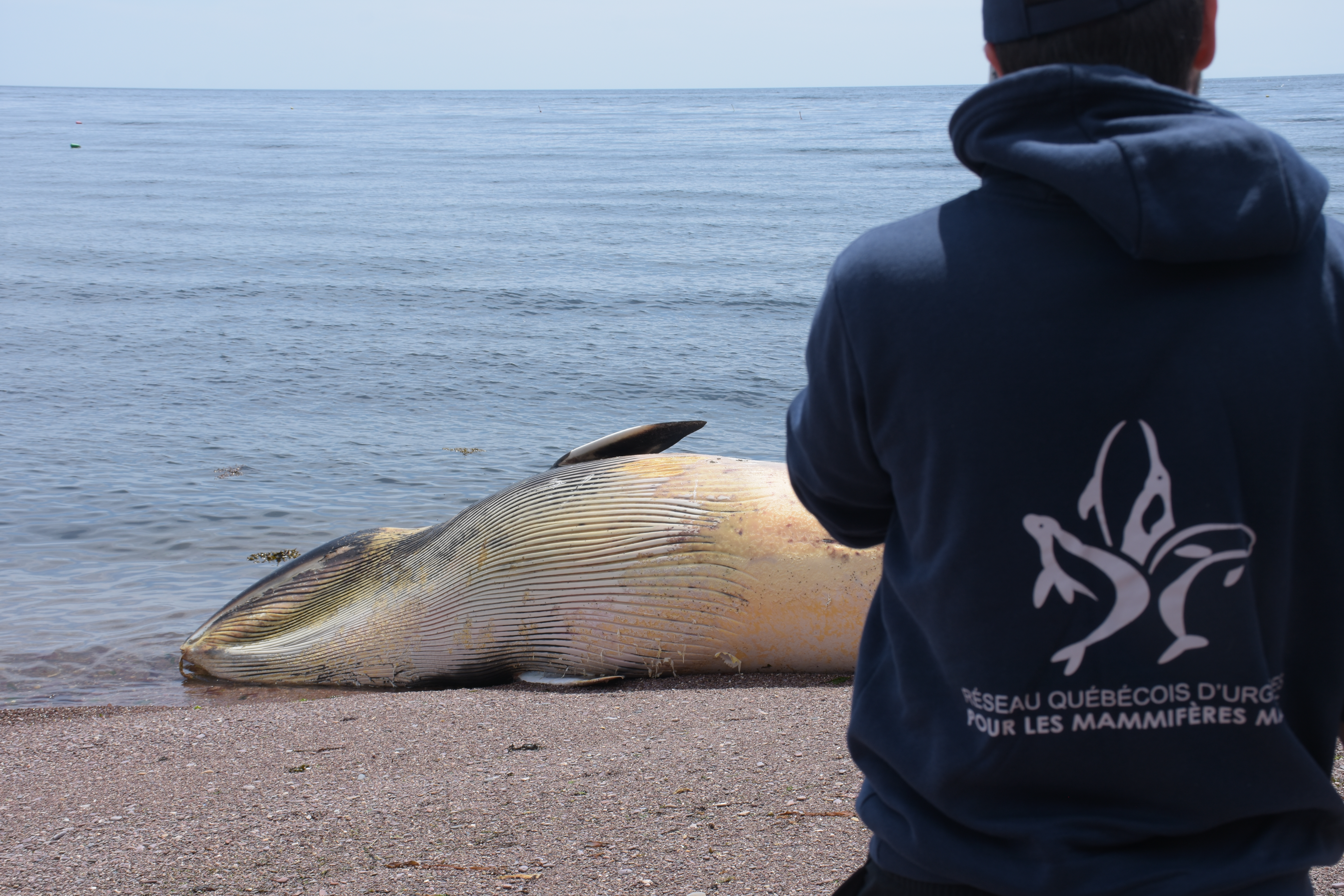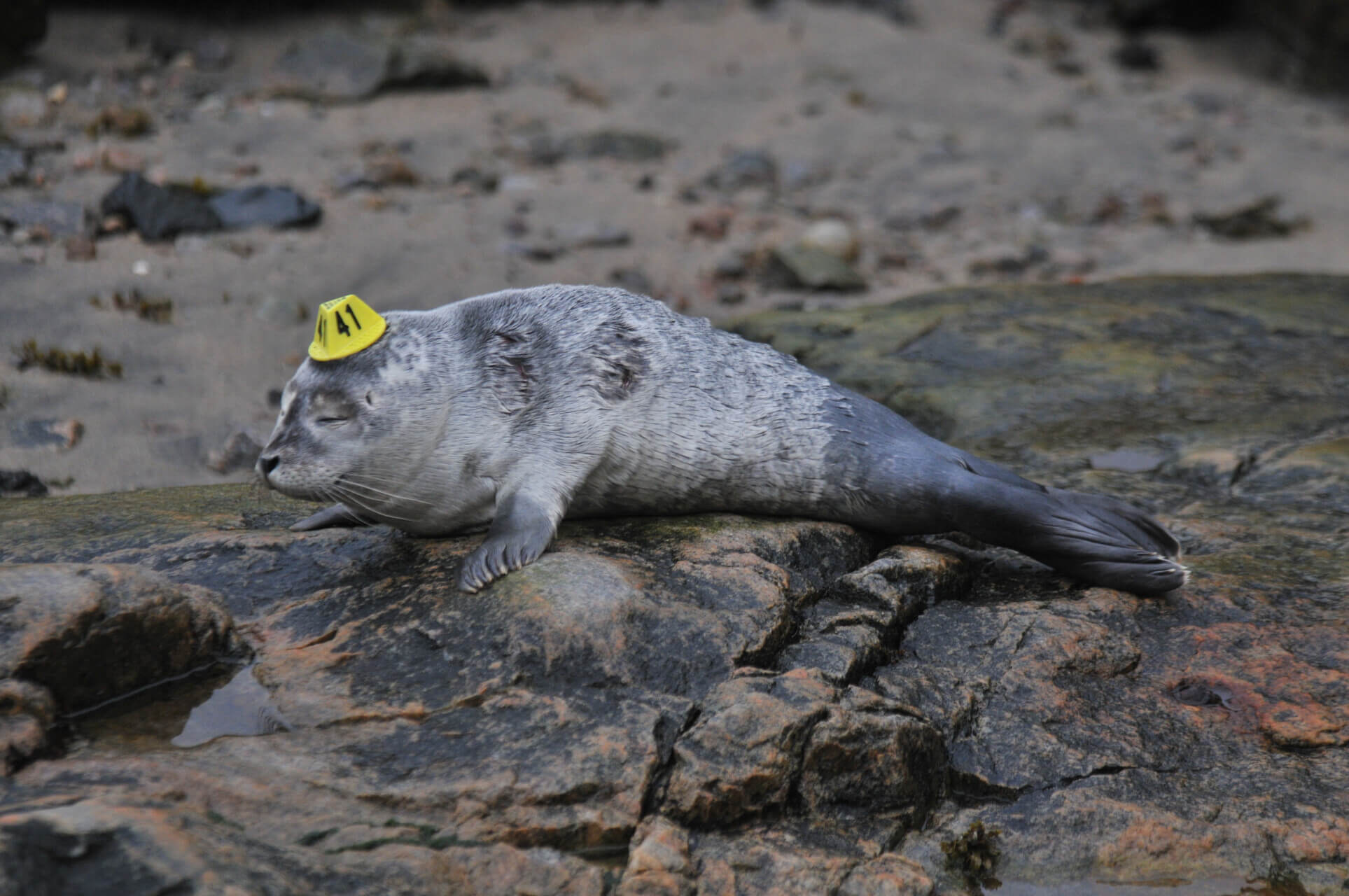Only six beluga carcasses were found in 2024, the lowest figure in several years. By comparison, there were 17 carcasses in 2023 and 12 in 2022. How might we explain this change?
Marked drop in number of carcasses
Amongst the belugas found during this unusual year, there were no newborns, two females, three males, and one unknown. The term “unknown” means that the sex could not be determined due to the condition of the carcass. , the high proportion of females in carcass counts was particularly concerning. Birth complications known as dystocia had been reported in several of the dead females that were found. Although environmental stressors are suspected, the causes of these complications remain unknown.
Three of the six carcasses washed up in the Bas-Saint-Laurent region, two in the Côte-Nord region, and one on Prince Edward Island. It’s impossible to explain the causes of this sudden decline, but one of the hypotheses put forward by scientists is a shift in the population’s summer distribution. Because carcasses are brought to shore by the currents, they are most often found on the south shore of the estuary, between Trois-Pistoles and Matane. If belugas move a little farther downstream in the summer, the currents might carry carcasses more toward the Gulf. This could reduce the detectability of carcasses, particularly those that drift offshore or wash up in less frequented or less accessible areas. For now, this is only a hypothesis, which is why scientists are exercising caution. The dip in the number of carcasses discovered does not necessarily mean that the population’s health is improving.
Scientific work and vigilance
Three of the carcasses recovered in 2024 were sent for necropsy to Quebec’s wildlife health centre (CQSAS) at Université de Montréal’s Faculty of Veterinary Medicine. These analyses are a continuation of the meticulous work begun over forty years ago when the carcass recovery program was first created. Necropsies are designed to detect infections, parasites, pollutants, cancers, or trauma related to human activity. They are particularly essential for assessing the impacts of stressors such as chemical contaminants, which affect beluga behaviour and health.
Analyzing beluga carcasses also provides crucial information on the individual and collective health of this endangered population. The discovery of individuals that had been previously identified and monitored by GREMM for several years is particularly valuable for learning more about the species.
For carcasses that cannot be moved, samples of teeth, blubber, muscle, and occasionally certain organs are collected. These samples allow research teams to study cetaceans and how their living conditions are evolving, even if a complete carcass is unavailable. Samples are even archived for future studies! Greater difficulty in finding and collecting carcasses could therefore translate into less scientific knowledge.
The St. Lawrence beluga population was decimated by intense hunting that was only banned in 1979. Since then, it has shown no signs of recovery despite the conservation measures taken to protect the population. Instead, the species must contend with climate change, contaminants, habitat loss and degradation, reduced prey abundance, and human disturbance.
Vigilance is therefore essential. Occasional fluctuations cannot erase the worrying underlying trends that have been accumulating for this endangered species for more than twenty years.
The beluga mortality monitoring program is led by Fisheries and Oceans Canada in collaboration with Université de Montréal’s Faculty of Veterinary Medicine and the Quebec Marine Mammal Emergency Response Network.
To report a marine mammal stranded on shore or adrift in the water, contact QMMERN immediately at 1-877-722-5346.


